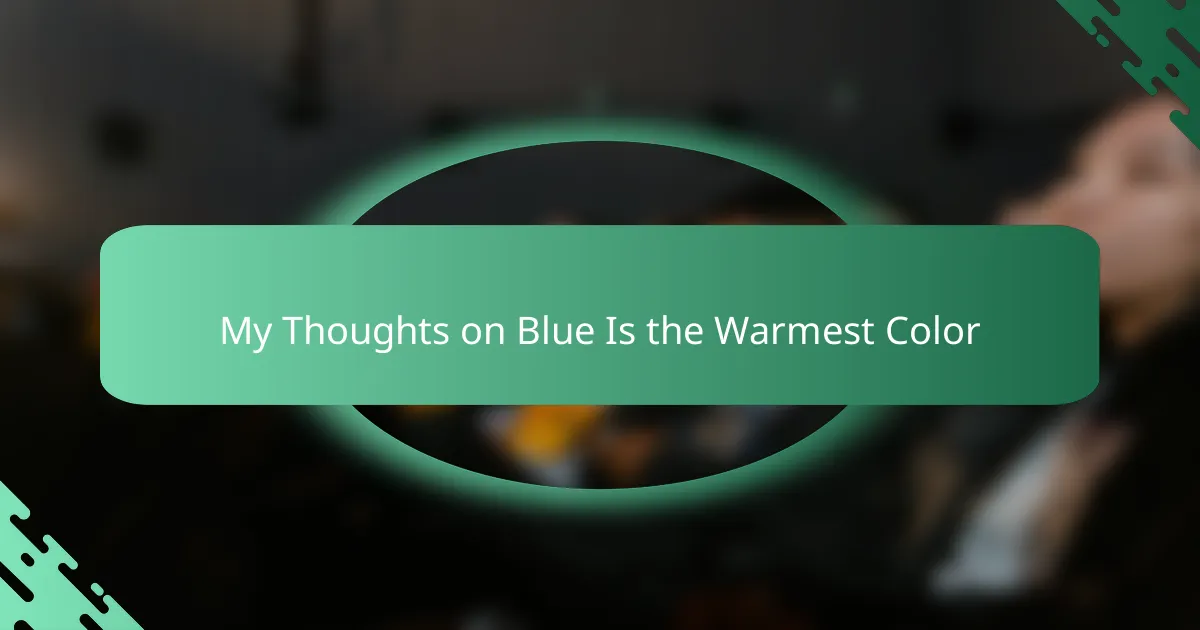Key takeaways
- French cinema emphasizes artistic expression, storytelling, and complex themes, often focusing on relationships and social issues.
- “Blue Is the Warmest Color” explores love, identity, and personal growth through the intimate relationship of its two main characters, Adèle and Emma.
- The film features powerful cinematic techniques, such as close-ups and a vibrant color palette, which enhance emotional engagement and audience connection.
- Personal reflections on the film highlight its relatability and the journey of self-discovery, emphasizing the transformative power of love and relationships.
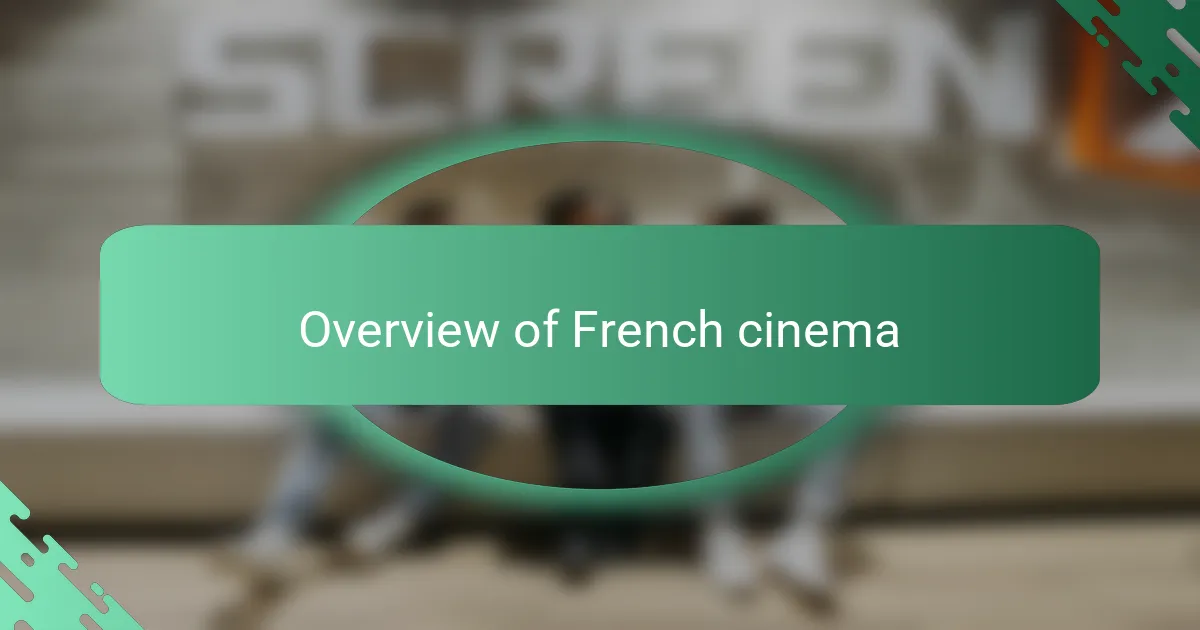
Overview of French cinema
French cinema has a unique charm that transcends cultural barriers. My encounters with French films often evoke a deep emotional resonance, showcasing the power of storytelling through poignant visuals and captivating narratives. It’s always fascinating how these films tackle complex themes, engaging audiences on multiple levels.
- French cinema is known for its artistic expression, blending aesthetics with profound storytelling.
- It often highlights relationships and social issues, drawing viewers into its rich emotional landscape.
- Iconic directors like Jean-Luc Godard and François Truffaut have shaped the New Wave, inspiring filmmakers worldwide.
- The films frequently explore identity and existence, challenging us to think critically about our own lives.
- Personal experiences with these movies often leave a lasting impression, sparking conversations that linger long after the credits roll.
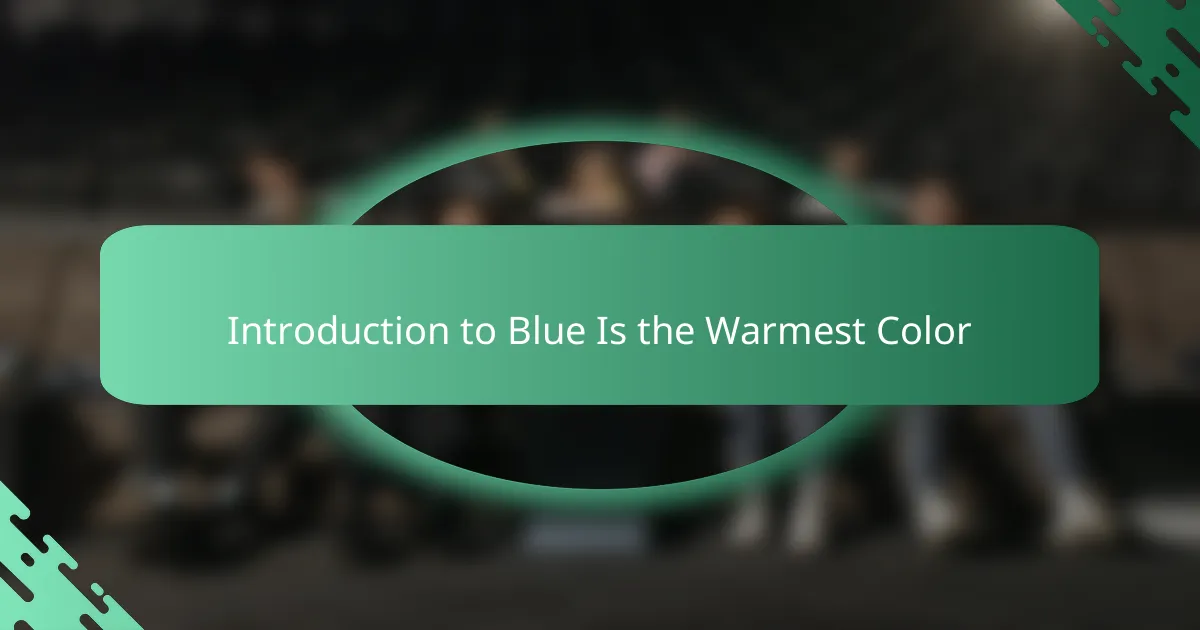
Introduction to Blue Is the Warmest Color
“Blue Is the Warmest Color” is a poignant French film that delves into the complexities of love and self-discovery. Directed by Abdellatif Kechiche, it beautifully portrays the passionate relationship between two young women, Adèle and Emma, exploring themes of identity and emotional growth. From my perspective, the film’s raw depiction of intimacy and the vibrant blue imagery resonates deeply, making it much more than just a love story—it’s a genuine journey through life’s highs and lows.
In my experience, seeing this film evokes a range of emotions; I found myself reflecting on my own relationships and the impact they’ve had on my personal development. The authenticity of the characters made their struggles and triumphs feel incredibly relatable, leading me to think about the transformative power of love.
Here’s a simple comparison of the film’s themes and elements:
| Aspect | Detail |
|---|---|
| Director | Abdellatif Kechiche |
| Main Themes | Love, Identity, Growth |
| Cinematography | Vivid Blue Imagery |
| Emotional Impact | Authentic and Intimate |
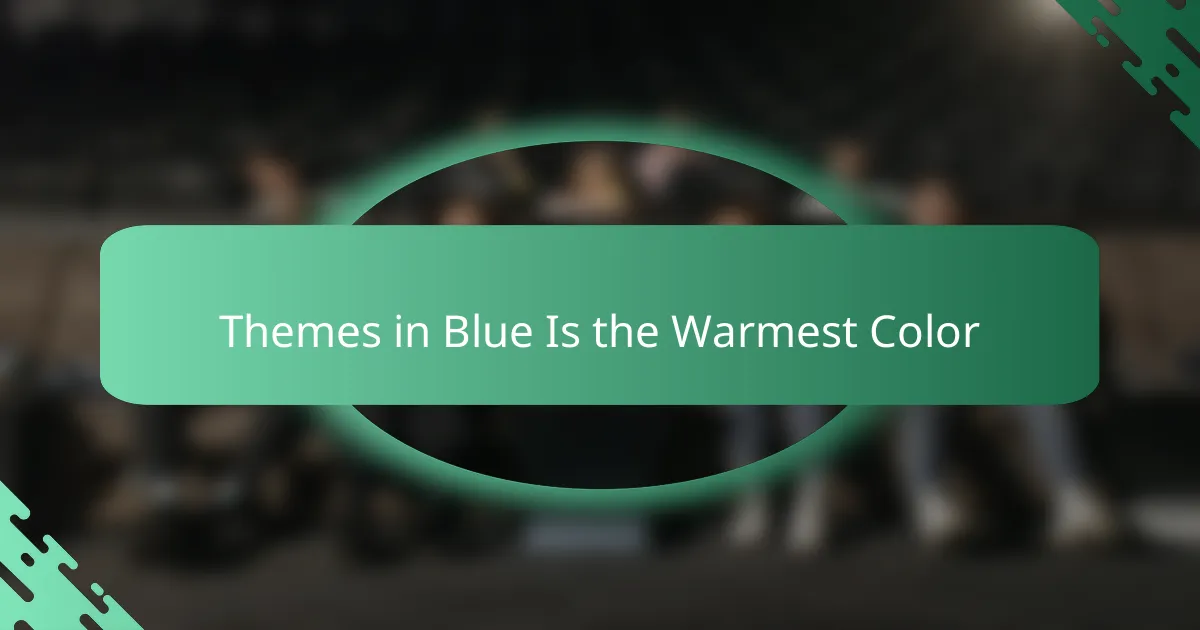
Themes in Blue Is the Warmest Color
The themes in “Blue Is the Warmest Color” are beautifully layered, each contributing to the emotional depth of the narrative. At its core, the film explores the journey of self-discovery, as Adèle navigates her identity and [censured] orientation. I remember feeling a deep connection to her struggles; it’s a reminder of how vital it is to embrace who we truly are, especially during formative years.
Another significant theme is the intensity of first love and its transformative power. The relationship between Adèle and Emma showcases the euphoria and agony that often accompany deep emotional connections. It’s fascinating to reflect on how love can shape our perspectives and choices, isn’t it? I found myself reminiscing about my own experiences, realizing how love can invoke both joy and heartache, making us richer for having lived through them.
Additionally, “Blue Is the Warmest Color” delves into societal perceptions of love and sexuality. The film challenges conventional norms, presenting a raw and unfiltered look at the characters’ relationships and the judgments they face. I felt a mix of admiration and frustration at their bravery; it highlights how societal pressure can weigh heavily on personal connections. As I watched, I wondered what it truly means to love freely in a world that often imposes restrictions on such expressions.
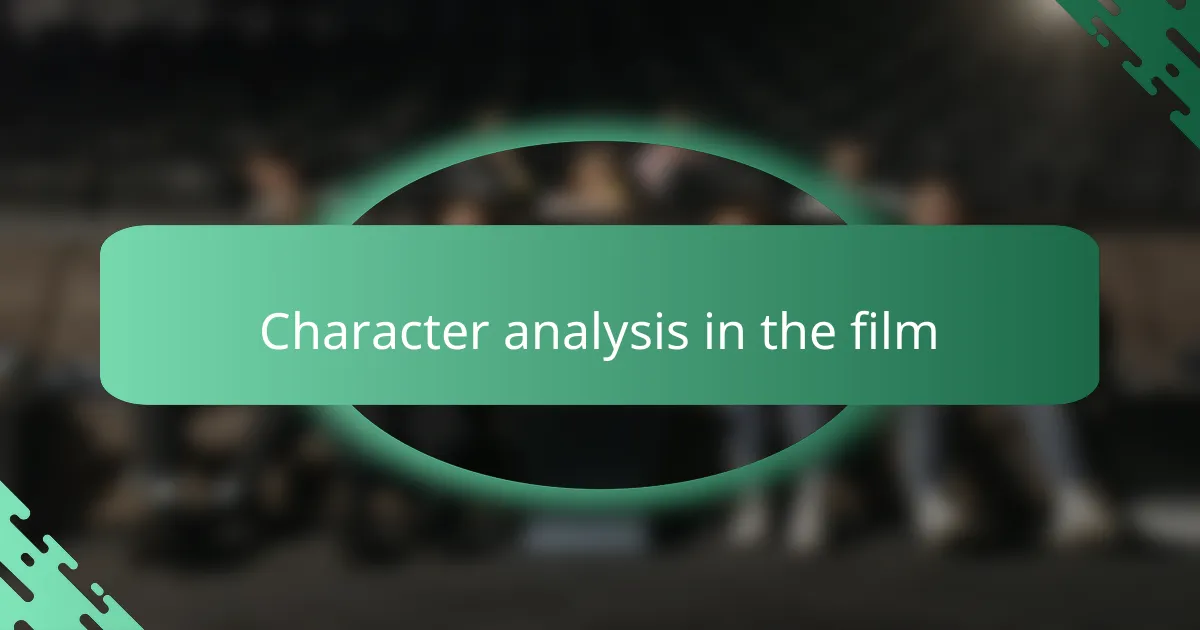
Character analysis in the film
The character development in “Blue Is the Warmest Color” is both profound and relatable. The growth of Adèle from a naive teenager to a mature woman who grapples with love and heartbreak is nothing short of striking. I recall watching her journey with a mix of empathy and nostalgia, as I recognized parallels to my own experiences in love and self-discovery.
On the other hand, Emma is portrayed as confident and artistic, embodying a different approach to life and relationships. Her vibrant personality and emotional complexity add depth to the film, making the dynamic between her and Adèle incredibly engaging. Their connection feels real, and I’ve often found myself reflecting on the heart-wrenching moments they share. It’s these emotional insights that make the characters resonate long after the credits roll.
“`html
| Character | Key Traits |
|---|---|
| Adèle | Naive, passionate, evolving |
| Emma | Confident, artistic, emotionally complex |
“`
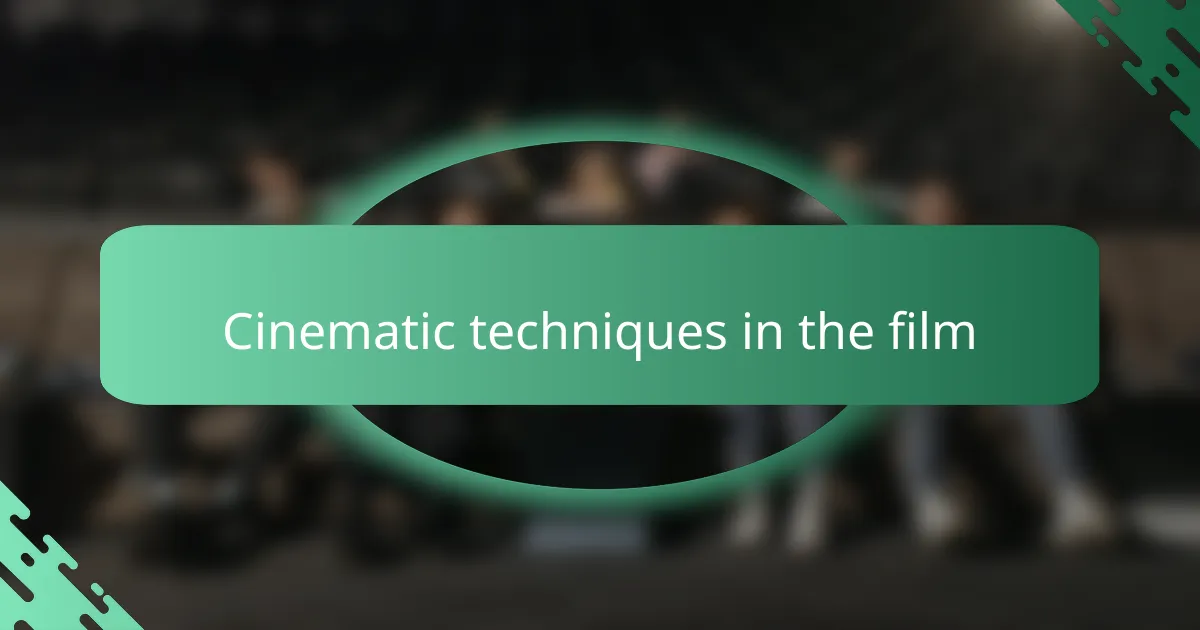
Cinematic techniques in the film
When I think about “Blue Is the Warmest Color,” I can’t help but admire the film’s powerful use of close-ups. The director’s choice to focus intensely on the characters’ faces offers a raw, intimate glimpse into their emotional landscapes. This technique pulls the audience into their world, making every longing glance and tear feel profoundly personal.
Another striking aspect is the color palette. The vibrant blues throughout the film not only symbolize passion and depth but also serve as an emotional anchor for viewers. It’s fascinating how certain scenes, drenched in different shades of blue, can evoke such strong feelings of love, despair, and joy. I still remember how a particular scene left me breathless, as if I were living the characters’ pain and pleasure alongside them.
Lastly, the fluidity of the camera movement mirrors the characters’ emotional journeys. The way the camera glides through their environments makes the audience feel like a silent observer in their life story. It’s a technique that enhances the overall experience, drawing us deeper into this beautifully crafted narrative.
| Cinematic Technique | Effect on Audience |
|---|---|
| Close-ups | Creates intimacy and showcases emotions |
| Color Palette | Evokes powerful emotions and symbolizes themes |
| Camera Movement | Enhances immersion and connectivity to characters |
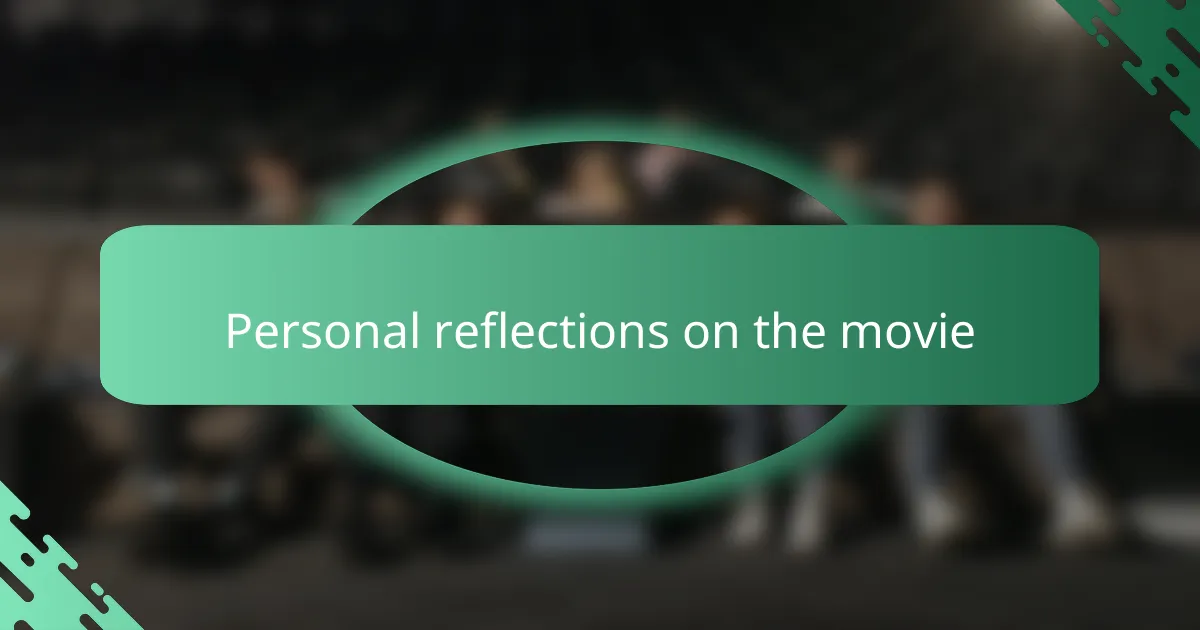
Personal reflections on the movie
Reflecting on “Blue Is the Warmest Color,” I find myself captivated by the raw authenticity of the characters’ journey. The film’s exploration of love and identity resonated deeply with me; I remember experiencing a similar emotional turmoil in my own youth, navigating the complexities of relationships. The use of color as a narrative device is striking—blue, in various shades, seemed to embody the characters’ evolving emotions, almost speaking to their struggles and triumphs.
While watching, I was moved by the intensity of Adèle’s experiences, especially her first love’s bittersweet nature, which reminded me of my own formative relationships. This film is not merely about romance; it’s an honest portrayal of self-discovery, which makes it profoundly relatable. It left me pondering my own life choices and the connections I’ve forged along the way.
| Aspect | My Thoughts |
|---|---|
| Emotional Depth | Profoundly moving and relatable |
| Character Development | Authentic and believable growth |
| Visual Style | Color usage enhances storytelling |
| Themes | Love, identity, and self-discovery |
